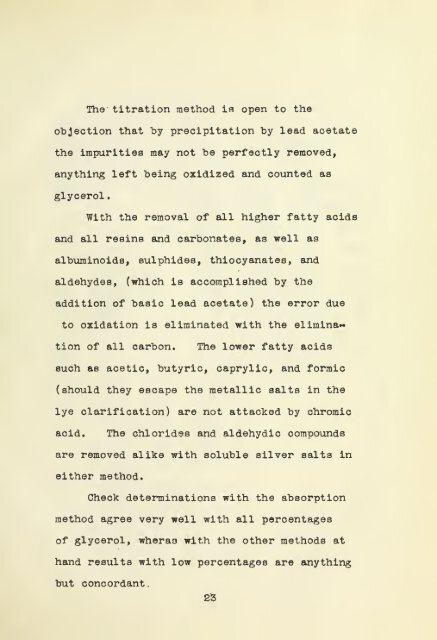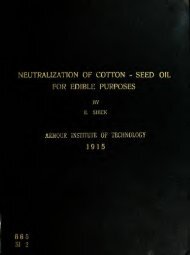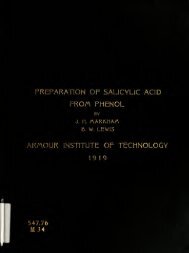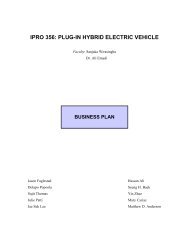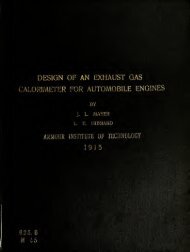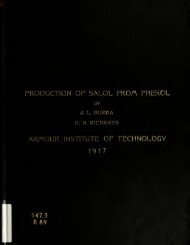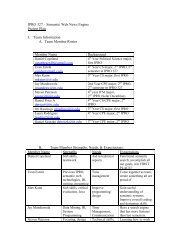Glycerol and spent lye clarification - Illinois Institute of Technology
Glycerol and spent lye clarification - Illinois Institute of Technology
Glycerol and spent lye clarification - Illinois Institute of Technology
Create successful ePaper yourself
Turn your PDF publications into a flip-book with our unique Google optimized e-Paper software.
The titration method is open to the<br />
objection that by precipitation by lead acetate<br />
the impurities may not be perfectly removed,<br />
anything left being oxidized <strong>and</strong> counted as<br />
glycerol.<br />
With the removal <strong>of</strong> all higher fatty acids<br />
<strong>and</strong> all resins <strong>and</strong> carbonates, as well as<br />
albuminoids, sulphides, thiocyanates, <strong>and</strong><br />
aldehydes, (which is accomplished by the<br />
addition <strong>of</strong> basic lead acetate) the error due<br />
to oxidation is eliminated with the elimina*-<br />
tion <strong>of</strong> all carbon. The lower fatty acids<br />
such as acetic, butyric, caprylic, <strong>and</strong> formic<br />
(should they escape the metallic salts in the<br />
<strong>lye</strong> <strong>clarification</strong>) are not attacked by chromic<br />
acid. The chlorides <strong>and</strong> aldehydic compounds<br />
are removed alike with soluble silver salts in<br />
either method.<br />
Check determinations with the absorption<br />
method agree very well with all percentages<br />
<strong>of</strong> glycerol, wherae with the other methods at<br />
h<strong>and</strong> results with low percentages are anything<br />
but concordant


